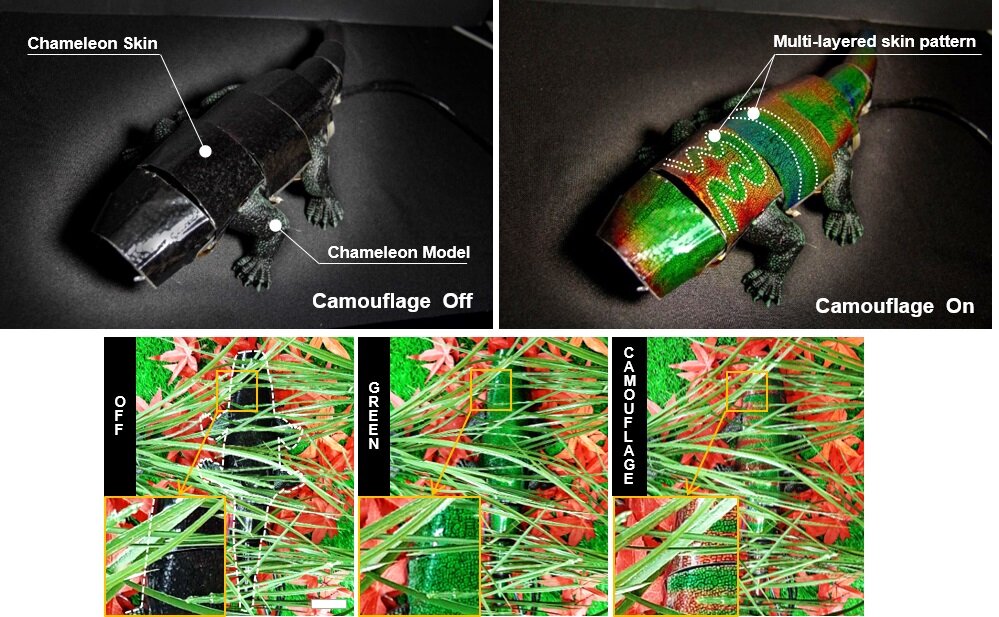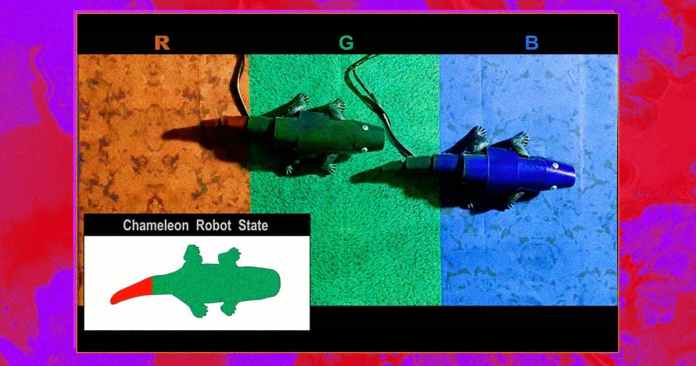
When you think of a chameleon, the first thing that comes to mind is the ability to change its body color to match the color of its surroundings. It’s unreasonable for humans, but what if robots could use these technologies? A research team from Seoul National University and Hanyang University published a paper on chameleon robots in Nature Communications. The chameleon robot has low durability due to its skin, and there may be limitations in flexibility such as bending and stretching. For this reason, the research team developed a new multi-layered artificial skin.
The top layer of artificial skin is coated with liquid-crystal ink, which changes color according to the molecular lines based on red, blue and green. A chameleon changes color with muscle movement, whereas a chameleon robot changes color with heat. There are several layers of silver nanowires under the liquid crystal ink layer, and heat is generated by the flow of electricity. An optical sensor located on the bottom of the robot reads the surrounding color and the developed controller heats the nanowire to a set temperature so that the color matches the surrounding.

The chameleon robot color change is not as fast as a real chameleon. The time it takes for the artificial skin color to change to the surrounding color is about 0.5 seconds, but the research team expects to be able to shorten this further. In addition, complex patterns and textures will be reflected in the artificial skin to give access to real chameleon camouflage technology. Related information can be found here.


















Add comment